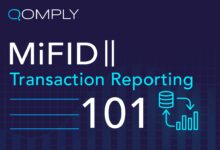Treasury management system for corporations with cash flow forecasting and liquidity optimization: 7 Powerful Treasury Management System for Corporations with Cash Flow Forecasting and Liquidity Optimization
In today’s fast-paced corporate world, mastering cash flow and liquidity isn’t just smart—it’s survival. A treasury management system for corporations with cash flow forecasting and liquidity optimization is no longer a luxury but a strategic necessity for businesses aiming to thrive amid volatility and uncertainty.
Understanding the Core: What Is a Treasury Management System for Corporations with Cash Flow Forecasting and Liquidity Optimization?

A treasury management system for corporations with cash flow forecasting and liquidity optimization is a comprehensive financial platform designed to help large organizations manage their cash, liquidity, risk, and financial operations efficiently. It integrates real-time data, predictive analytics, and automated workflows to give finance teams full visibility and control over their financial health.
Defining Treasury Management in the Modern Corporate Landscape
Treasury management has evolved from a back-office function to a central strategic pillar in corporate finance. It encompasses cash and liquidity management, risk mitigation (including foreign exchange and interest rate risks), capital structure optimization, and investment strategies. In this context, a treasury management system for corporations with cash flow forecasting and liquidity optimization acts as the nerve center of financial operations.
- Centralizes financial data from multiple sources (banks, ERPs, subsidiaries)
- Enables proactive decision-making through predictive insights
- Reduces operational inefficiencies and financial risks
According to the Association for Financial Professionals (AFP), over 78% of large corporations now use integrated treasury management systems to enhance forecasting accuracy and liquidity control (AFP.org).
The Role of Cash Flow Forecasting in Treasury Strategy
Cash flow forecasting is the heartbeat of effective treasury management. It involves predicting future cash inflows and outflows over short, medium, and long-term horizons. A robust treasury management system for corporations with cash flow forecasting and liquidity optimization leverages historical data, market trends, and scenario modeling to generate accurate forecasts.
- Short-term forecasts (daily/weekly) help manage operational liquidity
- Medium-term forecasts (monthly/quarterly) support budgeting and capital planning
- Long-term forecasts (annual+) guide strategic investments and debt management
“Accurate cash forecasting isn’t about predicting the future—it’s about preparing for every possible future.” — Jane Thompson, CFO at GlobalTech Inc.
Liquidity Optimization: The Ultimate Goal
Liquidity optimization ensures that a corporation maintains enough cash to meet its obligations without holding excessive idle balances. A treasury management system for corporations with cash flow forecasting and liquidity optimization uses algorithms and cash positioning tools to identify surplus funds, automate sweeps, and allocate capital efficiently across global entities.
- Minimizes idle cash through dynamic pooling
- Enhances return on cash via short-term investments
- Supports compliance with internal policies and regulatory requirements
For multinational corporations, liquidity optimization often involves navigating complex intercompany lending structures, tax implications, and currency regulations—all of which are streamlined through an intelligent treasury platform.
Key Features of a Modern Treasury Management System for Corporations with Cash Flow Forecasting and Liquidity Optimization
The effectiveness of a treasury management system for corporations with cash flow forecasting and liquidity optimization hinges on its feature set. Today’s leading platforms go beyond basic cash tracking to offer advanced analytics, automation, and integration capabilities that empower finance teams to act with speed and precision.
Real-Time Cash Positioning and Visibility
One of the most critical features is real-time cash visibility across all bank accounts, subsidiaries, and currencies. This allows treasurers to monitor cash positions instantly, reducing the risk of overdrafts or missed investment opportunities.
- Aggregates data from hundreds of banks via secure APIs
- Provides a single dashboard for global cash views
- Supports multi-currency reconciliation and FX rate integration
Platforms like Kyriba and Treasury Intelligence Center (TIC) offer real-time dashboards that update every few minutes, giving CFOs unprecedented control over their liquidity (Kyriba.com).
Automated Cash Flow Forecasting Tools
Manual forecasting is time-consuming and error-prone. Modern systems automate the process using machine learning models that learn from historical patterns and adjust forecasts dynamically based on new inputs.
- Supports various forecasting methods: direct, indirect, and statistical models
- Enables scenario planning (best case, worst case, most likely)
- Integrates with ERP systems like SAP, Oracle, and NetSuite for seamless data flow
These tools can reduce forecast variance by up to 40%, according to a 2023 study by Deloitte, significantly improving decision-making accuracy.
Integrated Liquidity Management and Cash Pooling
Liquidity management tools within a treasury management system for corporations with cash flow forecasting and liquidity optimization enable automatic cash concentration, notional pooling, and zero-balance accounts.
- Reduces borrowing costs by minimizing external debt needs
- Improves interest income through centralized surplus deployment
- Facilitates compliance with local banking and tax laws
For example, a global manufacturer using notional pooling reported a 15% reduction in net interest expenses after implementing a centralized treasury platform.
Benefits of Implementing a Treasury Management System for Corporations with Cash Flow Forecasting and Liquidity Optimization
Deploying a treasury management system for corporations with cash flow forecasting and liquidity optimization delivers tangible financial and operational advantages. These benefits extend beyond the treasury department, influencing overall corporate performance and resilience.
Enhanced Financial Forecasting Accuracy
With access to real-time data and predictive analytics, finance teams can generate more accurate cash flow projections. This leads to better budgeting, reduced surprises, and improved investor confidence.
- Reduces forecast errors by leveraging AI-driven trend analysis
- Enables rolling forecasts updated weekly or even daily
- Supports executive reporting with visual dashboards and KPIs
A Fortune 500 retail company improved its 13-week cash forecast accuracy from 68% to 92% within six months of adopting an integrated treasury solution.
Improved Liquidity Utilization and Cost Savings
By identifying idle cash and automating its movement, companies can significantly improve their return on cash while reducing reliance on credit lines.
- Eliminates unnecessary overdraft fees
- Reduces external financing needs through internal funding
- Enables better negotiation power with banks due to stronger cash positions
“Our treasury system paid for itself in less than a year just by optimizing our cash sweep mechanisms.” — Mark Reynolds, Treasurer at InnovateCorp
Strengthened Risk Management and Compliance
A centralized treasury platform enhances control over financial risks, including fraud, counterparty exposure, and regulatory non-compliance.
- Enforces segregation of duties and approval workflows
- Tracks and reports on financial covenants and debt compliance
- Provides audit trails and real-time alerts for suspicious activity
In highly regulated industries like pharmaceuticals and energy, this level of oversight is crucial for maintaining stakeholder trust and avoiding penalties.
How to Choose the Right Treasury Management System for Corporations with Cash Flow Forecasting and Liquidity Optimization
Selecting the right platform requires careful evaluation of your organization’s size, complexity, geographic footprint, and strategic goals. A treasury management system for corporations with cash flow forecasting and liquidity optimization should align with both current needs and future growth.
Assess Your Corporate Requirements and Pain Points
Begin by identifying the key challenges your treasury team faces. Are you struggling with manual spreadsheets? Lack of real-time data? Inaccurate forecasts? Poor bank connectivity?
- Map out existing processes and bottlenecks
- Engage stakeholders from finance, IT, and operations
- Define success metrics (e.g., forecast accuracy, days of cash visibility)
This foundational step ensures that the chosen system addresses real business problems rather than just offering flashy features.
Evaluate Integration Capabilities and Scalability
The system must seamlessly integrate with your existing ERP, banking networks, and financial applications. Look for platforms with strong API support and pre-built connectors.
- Check compatibility with SAP, Oracle, Microsoft Dynamics, etc.
- Ensure support for SWIFT, EBICS, and other banking protocols
- Assess cloud scalability for future expansion into new markets
A scalable solution grows with your business, avoiding costly migrations down the line.
Review Security, Support, and Vendor Reputation
Treasury systems handle sensitive financial data, so security is paramount. Evaluate the vendor’s data encryption standards, compliance certifications (e.g., SOC 1/2, ISO 27001), and incident response protocols.
- Request references from similar-sized companies
- Test customer support responsiveness during the trial phase
- Review SLAs for uptime, maintenance, and upgrade frequency
Reputable vendors like SAP Treasury, Oracle Treasury, and Coupa Treasury offer enterprise-grade security and global support networks.
Implementation Best Practices for a Treasury Management System for Corporations with Cash Flow Forecasting and Liquidity Optimization
Even the most advanced treasury management system for corporations with cash flow forecasting and liquidity optimization will underperform without proper implementation. A structured rollout plan is essential for maximizing ROI and user adoption.
Build a Cross-Functional Implementation Team
Success depends on collaboration between treasury, IT, finance, and procurement. Assign clear roles and responsibilities early in the process.
- Appoint a project manager with PMP or equivalent certification
- Include super-users from each department to provide feedback
- Establish regular check-ins and milestone reviews
This collaborative approach minimizes resistance and ensures the system meets diverse user needs.
Data Migration and System Configuration
Data quality is critical. Cleanse historical cash flow data, standardize account hierarchies, and validate bank connectivity before go-live.
- Use staging environments to test configurations
- Validate forecast models against actuals during pilot phases
- Document all setup decisions for future audits
Many organizations underestimate the effort required here—allocating sufficient time and resources prevents costly errors post-launch.
Training and Change Management
User adoption is often the biggest hurdle. Provide role-based training, create easy-to-follow guides, and offer ongoing support.
- Host live webinars and hands-on workshops
- Develop a knowledge base with FAQs and video tutorials
- Recognize and reward early adopters to drive engagement
Companies that invest in change management see up to 50% faster adoption rates, according to McKinsey.
Case Studies: Real-World Impact of a Treasury Management System for Corporations with Cash Flow Forecasting and Liquidity Optimization
Real-world examples demonstrate how a treasury management system for corporations with cash flow forecasting and liquidity optimization transforms financial operations across industries.
Global Manufacturing Firm Reduces Cash Conversion Cycle by 18 Days
A multinational industrial equipment manufacturer implemented a cloud-based treasury platform to centralize its fragmented cash management processes across 12 countries.
- Integrated 200+ bank accounts into a single dashboard
- Automated daily cash forecasts using AI models
- Reduced manual reconciliation time by 70%
As a result, the company improved its cash conversion cycle from 45 to 27 days and freed up $48 million in working capital.
Retail Chain Enhances Forecast Accuracy and Liquidity Planning
A large retail chain with seasonal revenue fluctuations struggled with cash shortages during peak inventory periods. After deploying a treasury management system for corporations with cash flow forecasting and liquidity optimization, they gained predictive insights into cash needs.
- Implemented rolling 13-week forecasts updated weekly
- Linked sales data from POS systems to cash models
- Automated intercompany loans during high-demand months
Forecast accuracy improved from 60% to 89%, and emergency borrowing dropped by 65%.
Pharmaceutical Company Strengthens Compliance and Risk Controls
A leading pharma firm needed to meet strict SOX and IFRS compliance requirements. Their legacy systems lacked audit trails and real-time monitoring.
- Deployed a treasury platform with full workflow automation
- Enabled real-time fraud detection and alerting
- Streamlined covenant tracking for $2.3B in debt facilities
The new system reduced compliance reporting time by 55% and eliminated manual errors in financial disclosures.
Future Trends Shaping the Evolution of Treasury Management Systems
The landscape of treasury management is rapidly evolving. A treasury management system for corporations with cash flow forecasting and liquidity optimization must adapt to emerging technologies and shifting business models.
Artificial Intelligence and Predictive Analytics
AI is revolutionizing cash forecasting by detecting subtle patterns in transaction data, seasonality, and macroeconomic indicators.
- Enables autonomous forecasting with minimal human input
- Predicts potential cash shortfalls weeks in advance
- Recommends optimal funding strategies based on risk profiles
According to Gartner, by 2026, 60% of large enterprises will use AI-powered treasury tools, up from 15% in 2023.
Blockchain and Smart Contracts for Treasury Operations
Blockchain technology offers secure, transparent, and automated execution of treasury functions such as intercompany settlements and invoice financing.
- Reduces settlement times from days to minutes
- Enables self-executing smart contracts for recurring payments
- Improves auditability and reduces fraud risk
Pilots by companies like Maersk and HSBC show promising results in streamlining cross-border cash movements.
Integration with ESG and Sustainable Finance Initiatives
As sustainability becomes a boardroom priority, treasury systems are being used to track green bond proceeds, carbon credit investments, and ESG-linked loan covenants.
- Monitors allocation of funds to environmentally responsible projects
- Generates reports for ESG disclosures and investor relations
- Supports sustainability-linked financing with real-time KPI tracking
This integration positions the treasury as a key enabler of corporate sustainability goals.
What is a treasury management system for corporations with cash flow forecasting and liquidity optimization?
A treasury management system for corporations with cash flow forecasting and liquidity optimization is a digital platform that helps large businesses manage their cash, forecast inflows and outflows, and optimize liquidity across global operations. It combines automation, analytics, and integration to improve financial decision-making and reduce risk.
How does cash flow forecasting improve liquidity management?
Accurate cash flow forecasting allows companies to anticipate surpluses and deficits in advance, enabling them to invest excess cash, avoid unnecessary borrowing, and maintain optimal liquidity levels. When integrated into a treasury management system, forecasting becomes dynamic and responsive to real-time changes.
Can small and mid-sized enterprises benefit from these systems?
Yes, while traditionally used by large corporations, modern cloud-based treasury solutions are now accessible and affordable for mid-sized firms. These platforms offer scalable features that help SMEs improve cash visibility, reduce financing costs, and support growth.
What are the main challenges in implementing a treasury management system?
Common challenges include data integration from disparate sources, resistance to change, lack of internal expertise, and ensuring bank connectivity. Success requires strong project management, stakeholder buy-in, and vendor support.
Which industries benefit most from advanced treasury systems?
Industries with complex cash flows—such as manufacturing, retail, pharmaceuticals, energy, and technology—benefit significantly. Multinational corporations with multiple currencies, subsidiaries, and regulatory environments gain the most value from centralized treasury platforms.
Implementing a treasury management system for corporations with cash flow forecasting and liquidity optimization is no longer optional—it’s a strategic imperative. From enhancing forecast accuracy to optimizing global liquidity, these systems empower finance leaders to navigate uncertainty with confidence. As technology evolves, the integration of AI, blockchain, and ESG tracking will further elevate the role of treasury from operational function to strategic driver. Companies that embrace this transformation today will be better positioned to achieve financial resilience, operational efficiency, and long-term growth tomorrow.
treasury management system for corporations with cash flow forecasting and liquidity optimization – Treasury management system for corporations with cash flow forecasting and liquidity optimization menjadi aspek penting yang dibahas di sini.
Further Reading:



